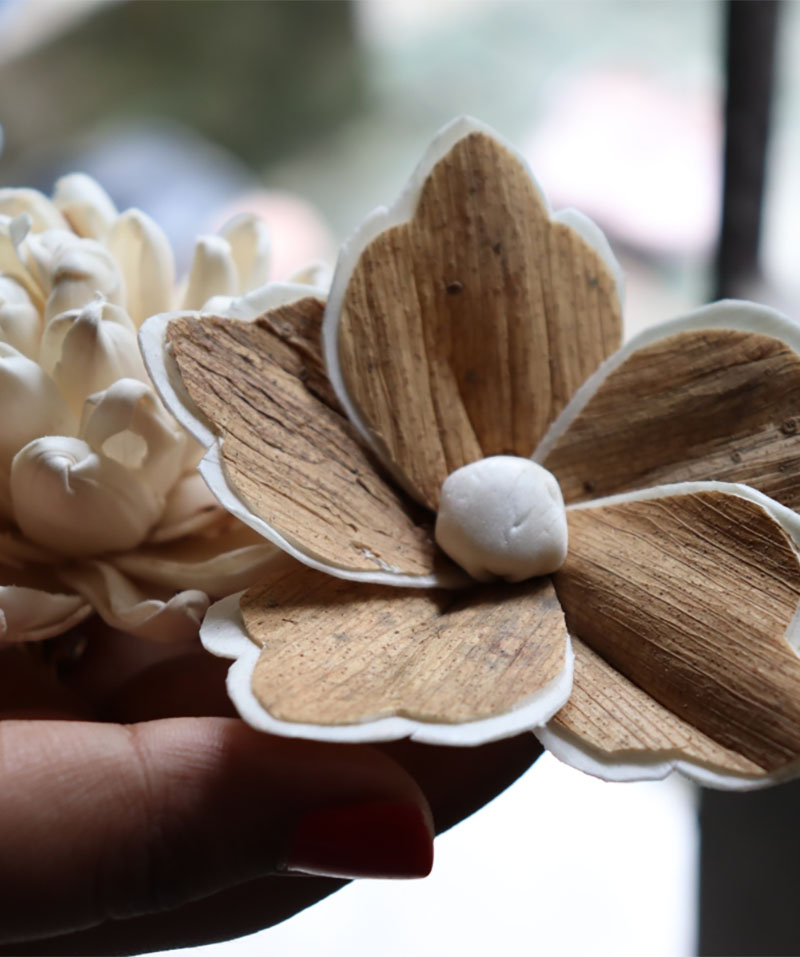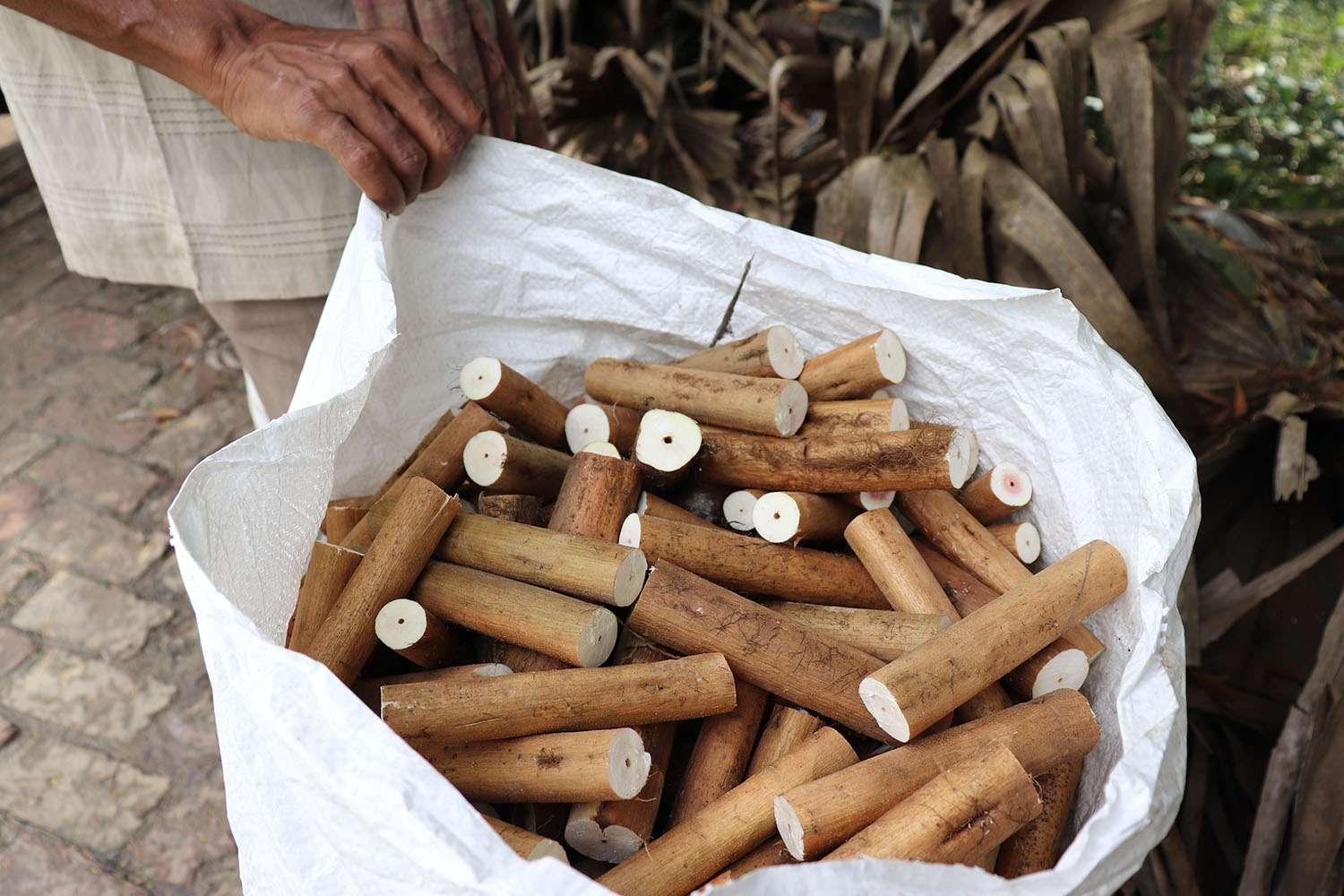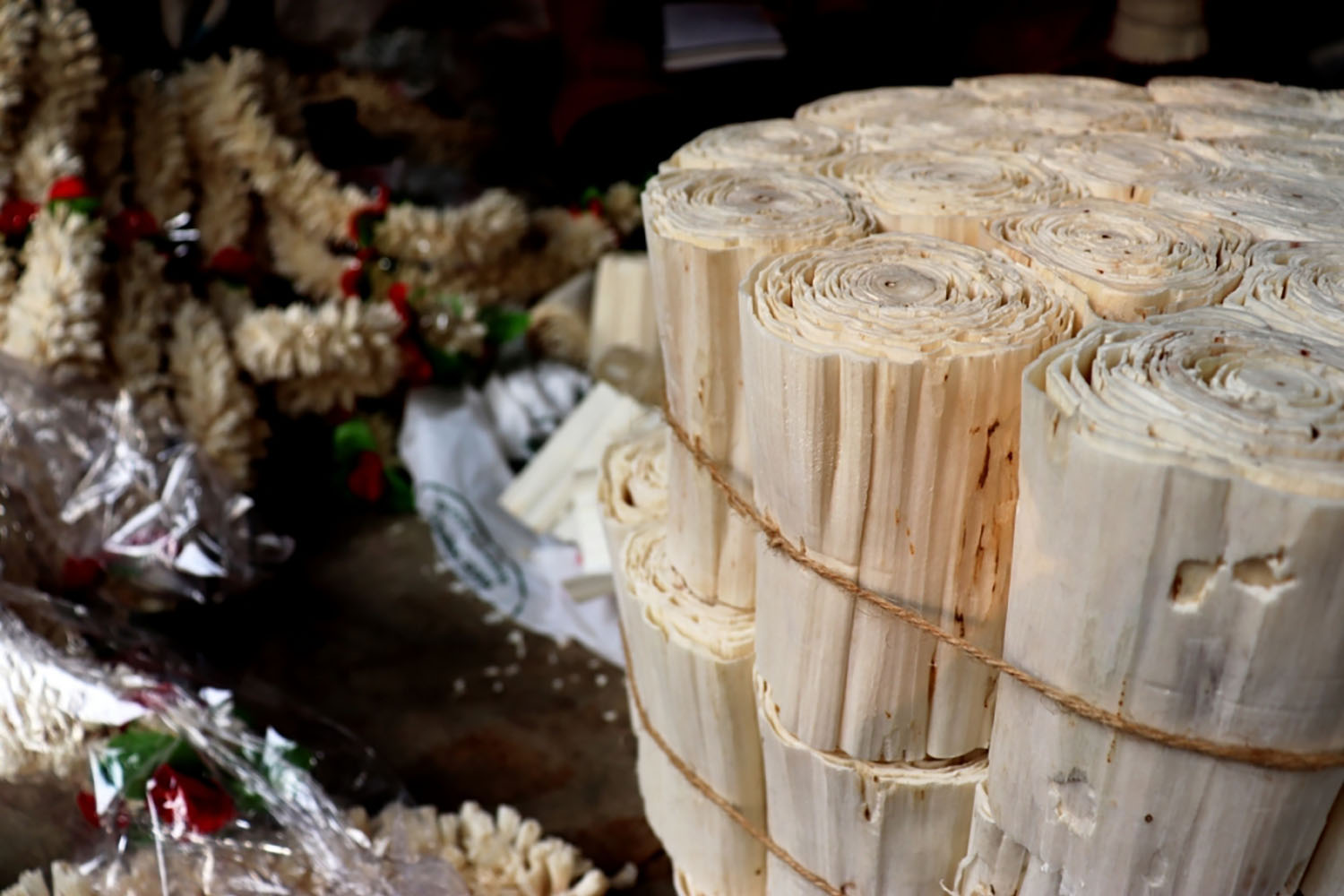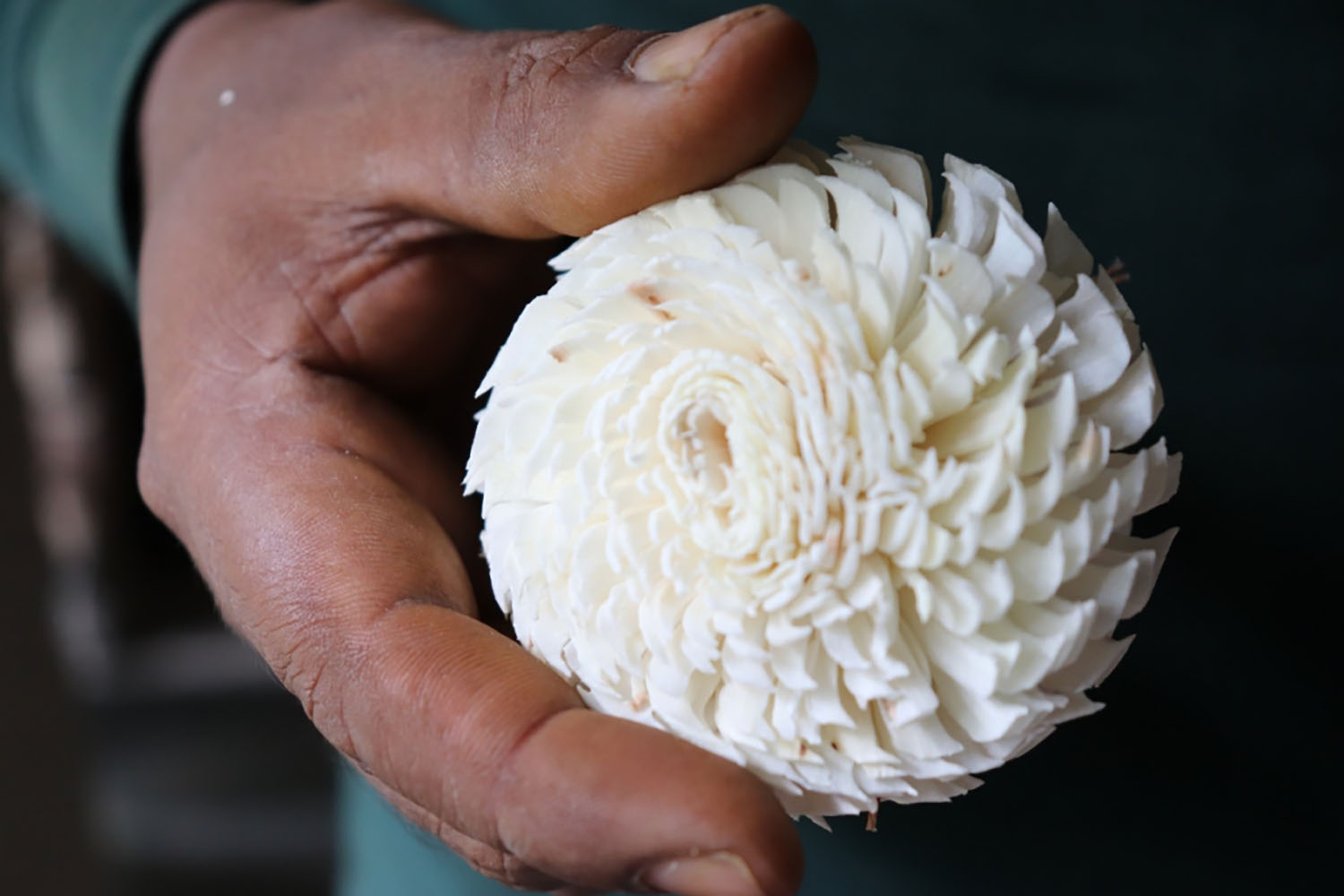Deriving its name from the plant Aeschynomene aspera, known as shola in Bangla, the sholapith or sholarkaj is a craft popular in West Bengal and parts of Odisha. Characterised by its white and spongy appearance, the soft white core of the shola plant, called pith or Indian cork, is used to make several religious and cultural objects. According to the local folklore, the deity Vishwakarma was commissioned to create a pure white crown and garland for the marriage of Shiva and Parvati, and when he was unable to produce one, Shiva dropped a lock of hair in a pond from which sprung the shola plant, and another hair from his arm, which became a garland maker, thus giving the present-day craftsmen their name. In another folklore, with the sudden appearance of Lord Krishna in front of his friend and worshipper, Sudama, a garland made of shola was offered to the deity which Krishna wore as a janeu, around his waist. Thus, the shola is often associated with ideas of purity and auspiciousness.
Shola bhat or phool grows in three to five feet deep water in swampy environments. Reaching a height of five to six feet and a girth diameter ranging between two to three inches, the plant is recognised by the grey leaves. The quality of the pith is recognisable from its bark, which, when plain and unruffled indicates a milky white pith, best suited for the craft. The process of procuring the pith from the plant involves uprooting the plant, using a crescent-shaped sickle, known as a hansuli. Traditionally a task undertaken by the women, the plant is trimmed and segmented and left to completely dry until the stem turns brown. The basic tools required to design using the shola are a metal cutter or knife, known as khat, using which the shola is primarily cut and shaped, and a pair of scissors known as kanchi, which is used to add details to the object and add finishing touches. Craftsmen working with sholapith are known as malakars, or the makers of malas (garlands).
The objects the shola is used to make today serve specific functions such as the topor and mukut, traditional head accessories worn by the bride and groom in a Bengali wedding; torso and heads of the puppets made by the Muragachha Colony and Borboria village in Nadia district; the daak-e-shaaj, or decorations that are a part of the Durga Puja festivities. The sholapith craft is also famous in parts of Odisha where it is used to create headgears for the deity Jagannath and his siblings during the Rathayatra festivals and boats for the Boita Bandana or the Bali Yatra festival held during Kartik Purnima. While sholapith, as a craft material, is both biodegradable and eco-friendly, the plant has been a part of the Red List of Threatened Species compiled by the International Union for Conservation of Nature (IUCN). The sholapith craft is also known as netti in Tamil Nadu.
First Published: April 21, 2022
Last Updated: July 26, 2023





